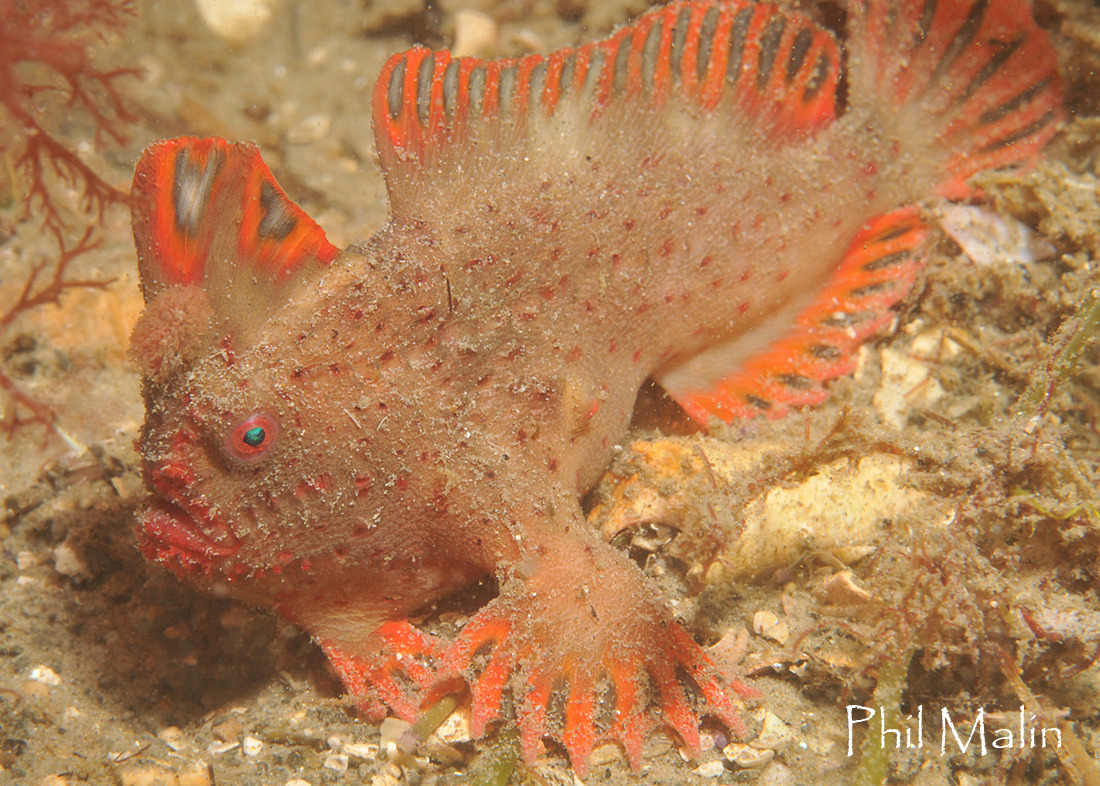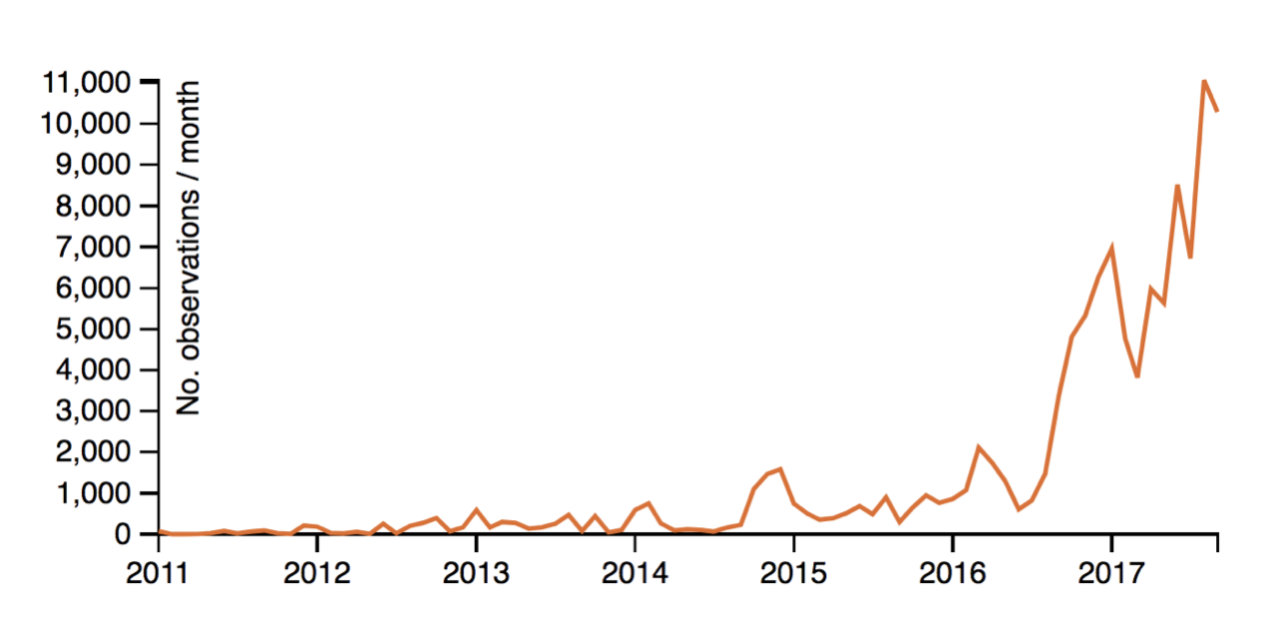Observation of the Week, 5/18/18

Our Observation of the Week is the first Red Handfish (and only handfish of any kind) posted to iNaturalist! It was seen off of Tasmania by @acanthaster.
“Learning to dive was without a doubt one of the best decisions of my life and has taken my love for the natural world to a whole new level underwater,” says Phil Malin (@acanthaster). “The incredible interactions that you can have with a multitude of species on every dive never gets old for me.” And part of Phil’s diving experience has been searching for and photographing the rare handfish.
Handfish - members of the family Brachionichthyidae - are actually a type of anglerfish, the deep sea versions of which have become justifiably famous for their strange appearance and for the “lures” they use to attract prey. You can clearly see this structure in Phil’s photo, but the organs that give handfish their names - both common and scientific - are of course the amazing hand-like pectoral fins. While a handfish can use its tail to swim in short bursts, it relies on the pectoral fins to “walk” along the seafloor where it lives. Because these fish are mainly sedentary and don’t move very far, they usually live in small population clusters. In fact, a new population of Red Handfish were recently discovered off of Tasmania, doubling the known world population to a total of around eighty individuals. Handfishes live exclusively in the Australian region.
Being such a rare type of fish, handfish have been a sought after species for Phil to photograph. In 2008, he and a friend “spent an uncomfortable 80 mins diving in a cold, dirty river and I actually managed to photograph [a Spotted Handfish]. At the time, there were almost no photos of this species, so this was quite a find for me to photograph.”
He was able to photograph a Red Handfish in 2010 (see below) with the help of a friend and a woman who works with the fish, and
Since then, I have followed the usual progression as a semi-serious underwater photographer to upgrade my equipment to something with a much higher resolution and have been keen to head back and shoot the Red Handfish again. A few weeks ago I finally managed to find some time down in Tasmania to go for my Handfish hunt. Thankfully I managed to find one about 15 minutes into the dive, when I was still warm and functional. The conditions were very good, so this shot is substantially better than my last effort. Once you manage to hit them with enough light, their eyes glow a beautiful gem blue colour, which I think looks incredible. My next challenge is to re-shoot the Spotted Handfish in a higher resolution too.

Phil began to upload some of his fantastic fish photos to iNaturalist after Mark McGrouther (@markmcg), who runs the Australasian Fishes project on iNat, suggested he do so.
I am a regular diver on a part of the Australian coastline that doesn’t really have a lot of good observational data in the last decade, so I felt that I should start putting some of my photos to good use. iNaturalist has certainly made me more focussed on certain dives where I am attempting to shoot one of everything for a local species list. It is amazing how some common species that I usually don’t attempt to photograph are actually incredibly hard to shoot well. The Eastern Wirrah is a classic example of this. Challenges like this now inspire me to try and shoot good ID profile shots of these species as cleanly as possible.
I think citizen science projects such as iNaturalist will play an important role heading forward as climate change really starts to make a significant impact on species distribution. I am hoping I can continue to make a contribution in this space for many years to come.
- by Tony Iwane
- Check out this short video about the discovery of this new Red Handfish population.
- The Australasian Fishes project has been a great boon for iNat participation in Australia. Look at the growth of Australian observations after it got started in 2016! If you’re an underwater photographer, we’d love to have more fish photos!






Comentários
Thank you @tiwane for this excellent post. Thank you for adding the graph, that shows the growth of observations from Australia. We are delighted to be a growing part of iNaturalist. Australasian Fishes has a dedicated band of fish enthusiasts from Australia and New Zealand. And most of all, thank you to @acanthaster for his terrific contribution, which includes diving in cold Tassie waters. :)
Wow, thats such a cool fish. Excellent photography, and congratulations, @acanthaster!
@tiwane I have a journal entry ready to go for Australasian FIshes, but would like to slot an updated version of the above graph into it. Would it be asking too much to email me an update please to mark.mcgrouther@austmus.gov.au? Thank you. :)
Adicionar um Comentário